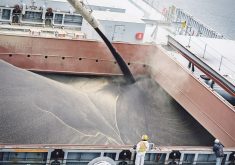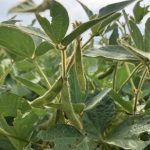Some had prophesized doom for the grain farmer.
Others had foreseen a golden age for livestock production and farm diversification.
But as they gathered eight years after the Crow Benefit ended, farmers and analysts at a life-after-the-Crow conference seemed to share the feeling that the results of the change have been both disappointing and surprisingly modest.
“There’s probably good reason to feel a little gypped,” said University of Manitoba agricultural economist James Rude.
University of Saskatchewan agri-cultural economist Hartley Furtan said net farm income on the Prairies had plunged since the abrupt end of the subsidy in 1995, revealing the cost of the loss with little compensation, which many expected from an anticipated rush of diversification.
Read Also

Russian wheat exports start to pick up the pace
Russia has had a slow start for its 2025-26 wheat export program, but the pace is starting to pick up and that is a bearish factor for prices.
The disappointments are many: livestock expansion has not been nearly as great as expected; farmers received nowhere near the Crow compensation most people expected; American and European grain subsidies did not fade away and the U.S. has not proved to be an insatiable consumer of Canadian meat.
“How did we miss it,” Furtan asked.
Sid Gordon, a farmer from Neepawa, Man., who lobbied to have the Crow Benefit ended, said he felt deflated by the lack of progress, as did most at the conference.
“I’ve heard more people here being wrong on the outcome than were right, and I actually think the reality turned out that way as well,” Gordon said.
Grain prices were high when the Crow was cut, which “masked the change. Everybody just cruised on that and the government got away with it.”
Continued foreign grain subsidies, the failure of transportation savings to make it into the hands of farmers, drought and now bovine spongiform encephalopathy have drained away farmer’s money, a number of speakers at the conference noted.
Some said there may not have been dramatic shifts after the end of the Crow Benefit because the shifting began in 1985, when the benefit replaced the Crow Rate and Ottawa began deregulating the grain transportation system.
Pig production began expanding in Manitoba and cattle production and slaughter drifted to Alberta, aided by Alberta government subsidies that offset the effects of the Crow.
By the time the Crow Benefit was ended, many in prairie agriculture had anticipated the change and had begun to adapt.
Two farmers noted how analysts’ predictions of increased value-added processing and livestock production were undermined by the increasing riskiness of prairie farming.
Owen McAuley said low margins in farming have held farmers back from investing in risky value-added enterprises, while Gordon said an unexpected danger of expanded livestock production was overreliance on the American market. Now that BSE has shut the market, he is getting out of the cattle business and concentrating on grain production – the opposite of what analysts expected to see in 1996.
And he said analysts were always wrong to expect eastern prairie producers to continue to produce grain and feedgrain as enthusiastically after the Crow ended.
Farmers don’t see much gain in producing cheap feedgrain.
“I make my decisions on net income,” Gordon said. “I just quit producing (low value grains) and moved on to another crop.”
Furtan said he thought a fundamental flaw in most analysts’ thinking in the early 1990s was to not factor in enough uncertainty or the chance for disastrous events to occur that could undermine the prairie farm economy.
Outlooks that only allow for average variability will fall apart under the pressures that farmers have faced since the end of the Crow Benefit.
Gordon said the best thing to come out of the deregulation has been the sharpening of producers’ minds.
“Our response time was faster,” said Gordon.
“Western Canadian farmers’ clock speed, on adoption of technology, on adoption of change, is maybe a positive outcome.”















